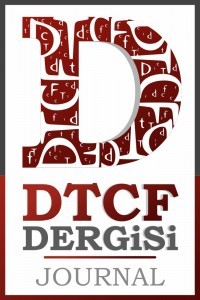“Düzmece” Olarak Anılan Mustafa Çelebi ve Bizans 1415–1416/17
Sultan I. Mehmed tahta geçtikten sonra 1413 Süleyman Çelebi’nin 1403 yılında Bizans ile yapmış olduğu anlaşmayı onaylamış ve harekât merkezini Anadolu’ya kaydırarak yaklaşık iki yıl sonra bölgede Osmanlı hâkimiyetinin tesisi için önemli adımlar atmıştır. Ancak I. Mehmed’in faaliyetleri Ankara Savaşı sonrasında kurulan statükoyu bozduğundan Timurlu Şahruh “Düzmece” olarak anılan Mustafa Çelebi’yi serbest bırakmıştır. Bundan sonra Mustafa Çelebi Anadolu’ya gelmiş ve 1415 Ocak’ında Bizans ve Venedik’ten yardım istemiştir. Anadolu’da Karamanoğlu İbrahim Bey ve İsfendiyar Bey’den destek gören Mustafa, Eflak Voyvodası Mirçea ile ittifak yaptıktan sonra Balkanlara geçmiş 1415 Ağustos sonu ve Cüneyd Bey’in de ona katılmasından sonra 1416 yılının Ekim’inde Rumeli’de iktidar mücadelesine girişmiştir. Sultan I. Mehmed isyancıların üzerine yürümüş ve Selanik’e sığınmaları sebebiyle kenti kuşatarak kendisine teslim edilmelerini istemiştir. İmparator II. Manuel Sultan I. Mehmed’e bir elçi göndererek sığınmacıları teslim etmesinin imkânsız olduğunu belirtmiştir. I. Mehmed, 1416 yılının Aralık sonu veya 1417 yılının Ocak başında Bizans ile bir anlaşma yapmış ve kendi hayatı boyunca Mustafa’nın serbest bırakılmaması koşuluyla İmparatora yıllık üçyüz bin akçe ödemeyi kabul etmiştir.
Anahtar Kelimeler:
Bizans, Osmanlı, I. Mehmed, II. Manuel Palaiologos, VIII. Ioannes, “Düzmece” Mustafa, Selanik, Bizans Kaynakları
The So-Called “False” Mustafa and Byzantium 1415–1416/17
In 1413, when Mehmed I became the sole ruler of the Ottoman State he consented to the agreement that Süleyman Çelebi had signed with Byzantium in 1403 and he started to campaign in Anatolia. After a couple of years of long military actions he made important steps for the restoration of the Ottoman rule in the area and reversed the status quo since the Battle of Ankara. As a result of this new situation Timurid Shahrukh released the so-called “False” Mustafa who afterwards came to Anatolia where he sought help from Byzantium and Venice January 1415 . In Anatolia he gain support from Karamanoglu İbrahim Beg and İsfendiyar Beg. After establishing an alliance with Mircea, the Voyvoda of Wallachia and crossed to the Balkans late August 1415 and on October 1416 he started a campaign for the rule of the Ottoman State in Rumeli with the participation of Cüneyd Beg at his side. Upon this incident Sultan Mehmed marched against the insurgents and besieged Thessalonike where he demanded their hand over. Emperor Manuel II sent an envoy to Sultan and declared that he would not surrender the refugees. In late December 1416 or in early January 1417, Sultan Mehmed came to an agreement with Byzantium and accepted to pay the annual sum of three hundred thousand akças. In return Emperor Manuel promised to keep Mustafa in prison during Mehmed’s lifetime.
Keywords:
Byzantium, Ottoman, Mehmed I, Manuel II Palaiologos, Ioannes VIII, “False” Mustafa, Thessalonike, Byzantine Sources,
___
- AKA, İsmail. (1994). Mirza Şahruh ve Zamanı, (1405-1447). Ankara: Türk Tarih Kurumu.
- BARKER, John W. (1969). Manuel II Palaeologus (1391–1425), A Study in Late Byzantine Statesmanship. New Brunswick: Rutgers University Press.
- BALIVET, Michel. (2000). Şeyh Bedreddin, Tasavvuf ve İsyan. (Çev. Ela Güntekin). İstanbul: Tarih Vakfı Yurt Yayınları.
- CHALKOKONDYLES, Laonikos. (1922). Laonici Chalkokandylae, Historiarum Demonstrationes I. (Ed. E. Jeno Darko). Budapest: Academia Litterarum Hungarica.
- DELİLBAŞI, Melek. (1989). Johannis Anagnostis, “Selânik (Thessaloniki)’nin Son Zaptı Hakkında Bir Tarih” (Sultan II. Murad Dönemine Ait Bir Bizans Kaynağı). Ankara: Türk Tarih Kurumu.
- DENNIS, George T. (1971-78). “1403 Tarihli Bizans-Türk Antlaşması”. (Çev. Melek Delilbaşı). Ankara Üniversitesi Dil ve Tarih-Coğrafya Fakültesi Dergisi 29 (1-4):153-166.
- DOUKAS. (1958). Istoria Turco-Byzantina (1361-1462). (Ed. Vasile Grecu). Bucharest: Editura Academici Republicii Populaire Romine.
- ENVERÎ. (2003). Fatih Devri Kaynaklarından Düstûrnâme-i Enverî, Osmanlı Tarihi Kısmı (1299–1466). (Haz. Necdet Öztürk). İstanbul: Kitabevi Yayınları.
- GEANAKOPLOS, Deno. (1975). “Byzantium and the Crusades, 1354-1453”. A History of the Crusades. (Ed. Kenneth M. Setton). Madison-Wisconsin- London: The University of Wisconsin Press. 3:63-103.
- HEYWOOD, Colin J. (1993). “Mustafa”. Encyclopedia of Islam 2nd Edition. VII, 710-712.
- IMBER, Colin. (1990). The Ottoman Empire 1300–1481. İstanbul: The Isis Press.
- İNALCIK, Halil. (1991). “Mehmed I”. Encyclopedia of Islam 2nd Edition. VI, 973- 978.
- -------------------. (1989). “The Ottoman Turks and the Crusades (1329-1451)”. A History of the Crusades (Ed. Kenneth M. Setton). Madison-Wisconsin- London: The University of Wisconsin Press. 6:222-310.
- KASTRITSIS, Dimitris J. (2007). The Sons of Bayezid: Empire Building and Representation in the Ottoman Civil War of 1402-1413. Leiden-Boston: Brill.
- MELIKOFF, Irene. (1965). “Djuneyd”. Encyclopedia of Islam 2nd Edition. II, 598- 600.
- NICOL, Donald M. (1999). Bizans’ın Son Yüzyılları (1261-1453). (Çev. Bilge Umar). İstanbul: Tarih Vakfı Yurt Yayınları.
- ----------------------. (2000). Bizans ve Venedik, Diplomatik ve Kültürel İlişkiler Üzerine Bir Araştırma. (Çev. Gül Çağalı Güven). İstanbul: Sabancı Üniversitesi Yayınevi.
- SETTON, Kenneth M. (1978). The Papacy and the Levant (1204-1571), vol. II, The Fifteenth Century. Philadelphia: The American Philosophical Society.
- SPHRANTZES, Georgios. (1990). Cronaca. (Ed. Riccardo Maisano). Roma: Accademia Nazionale dei Lincei.
- SYMEON, Archbishop of Thessaloniki. (1979). Politico-Historical Works of Symeon Archbishop of Thessalonica (1416/17–1429). (Ed. David Balfour). Wien: Verlag Der Österreischen Akademie Der Wissenschaffen.
- TEKİNDAĞ, Şehabeddin. (1960). “Mustafa Çelebi”. İslam Ansiklopedisi. VIII, 687- 689.
- THIRIET, F. (1959). Régestes des Délibérations du Sénat de Venise Concernant le Romanié, Tome Deuxiéme, 1400-1430. Hague: Paris Mounton&Co La Haye.
- UZUNÇARŞILI, İsmail, Hakkı. (1947). Osmanlı Tarihi, I. Cilt. Ankara: Türk Tarih Kurumu.
- ZACHARIADOU, Elizabeth A. (1983). “Süleyman Çelebi in Rumili and the Ottoman Chronicles”, Der Islam 60 (2):268-290.
- Yayın Aralığı: Yılda 2 Sayı
- Başlangıç: 1942
- Yayıncı: Ankara Üniversitesi
